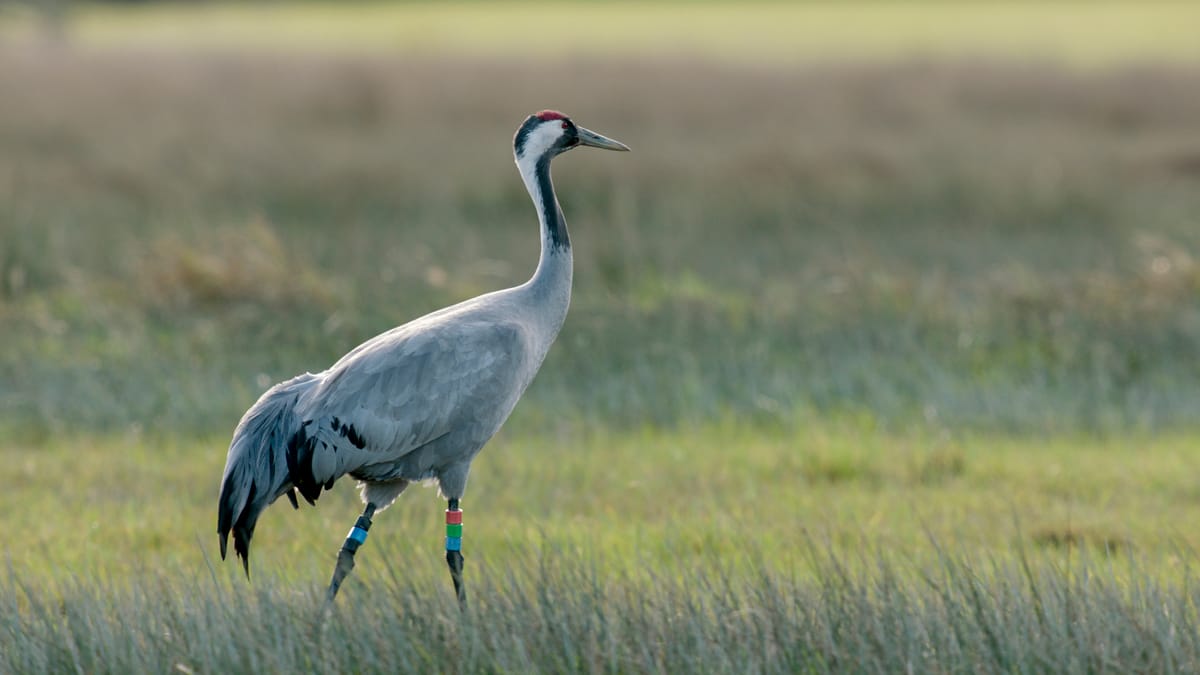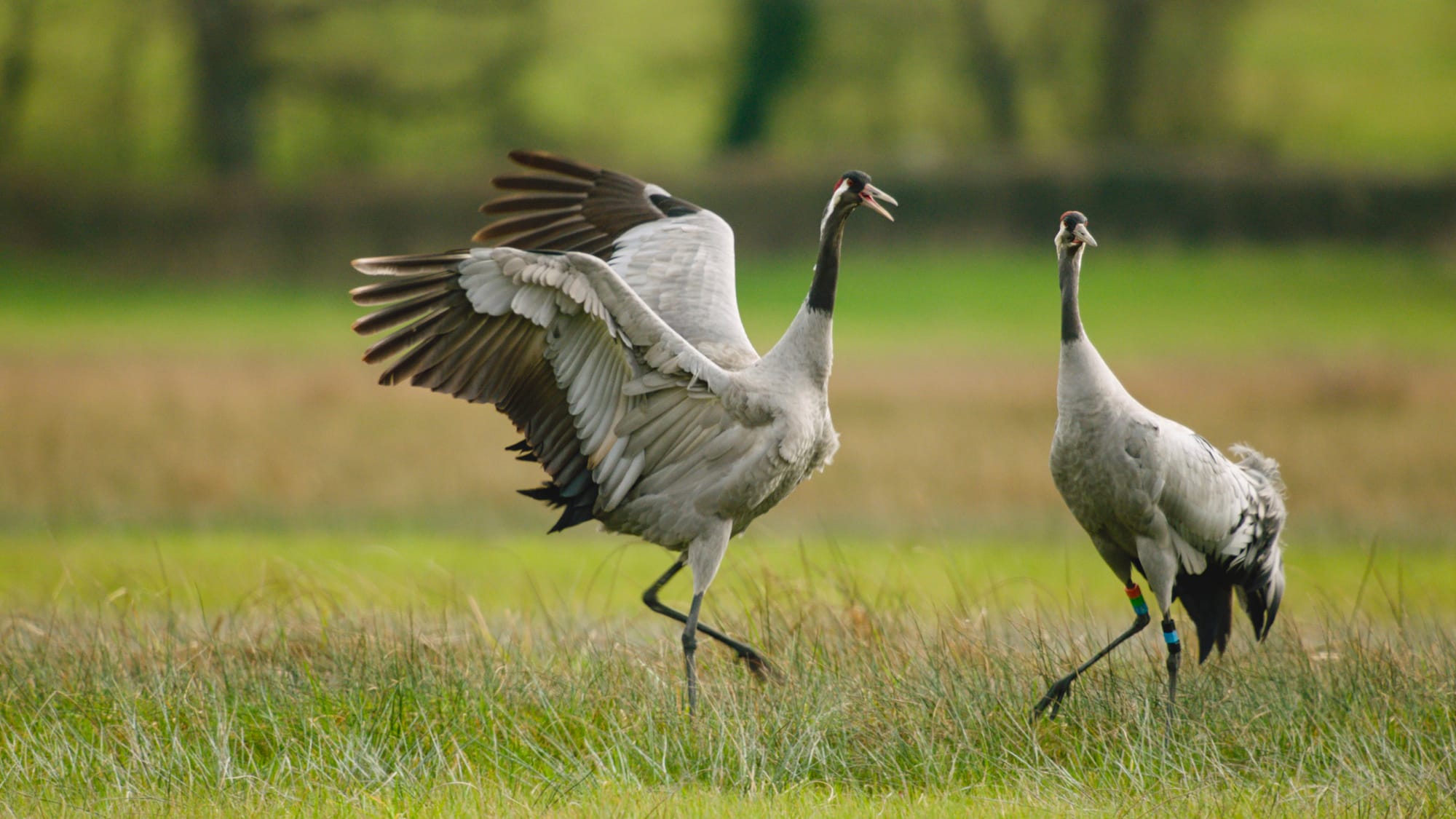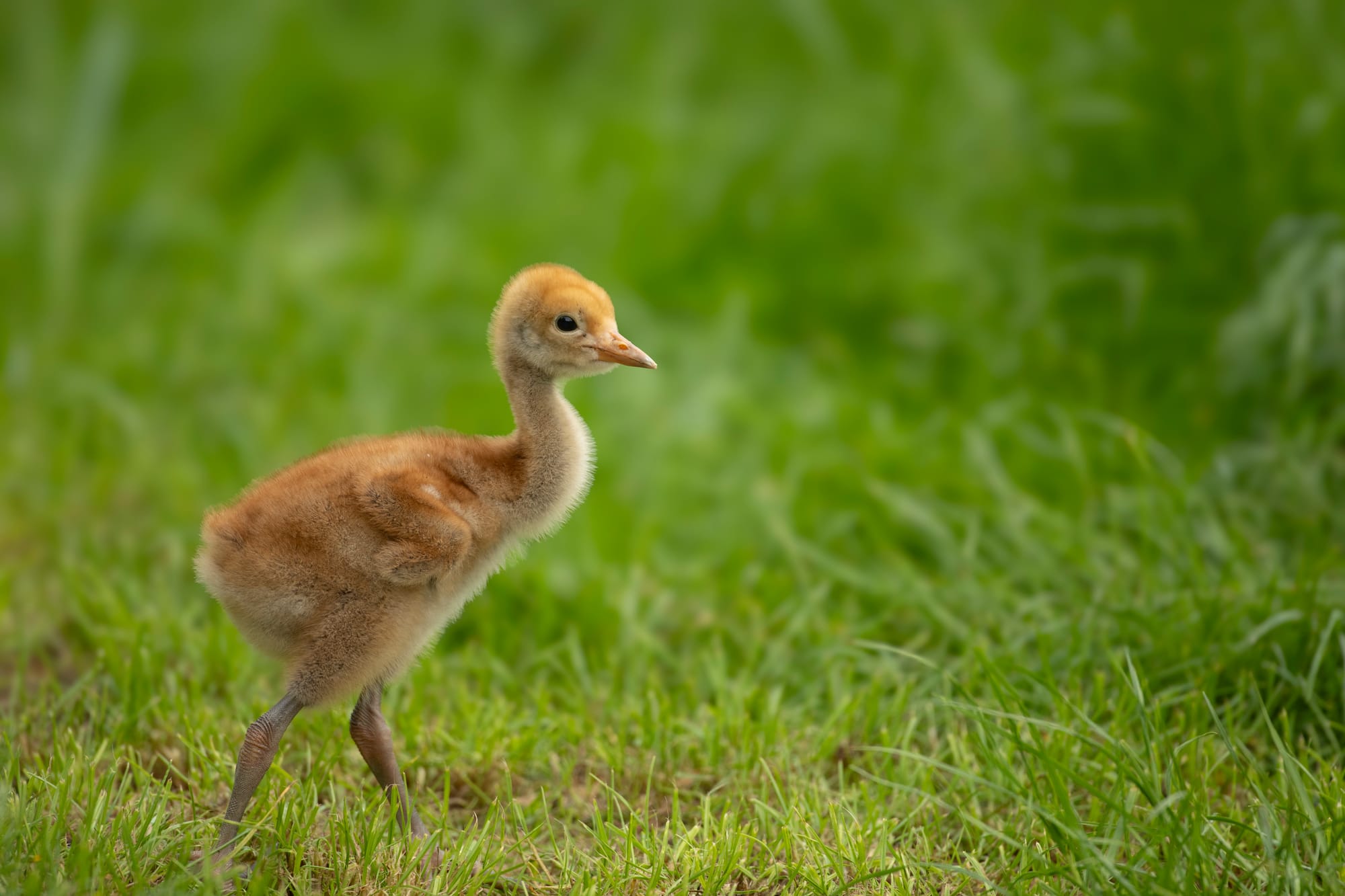Record-Breaking Year for UK’s Tallest Bird

By Jill Dando News
The number of Common Crane has reached record-breaking numbers across RSPB nature reserves according to the conservation charity’s latest breeding survey figures.
With 30 pairs counted, reserve teams, volunteers and supporters are celebrating the 20% increase from the previous highest total of 25 pairs in 2023.
These figures are the highest since the species returned to UK shores in 1979, after hunting and loss of wetlands drove them to extinction in the 16th century.

The total UK population now stands at around 80 pairs.
As the UK’s tallest bird, Cranes stand at 1.2m (4ft) and are easily recognised by their long legs, neck and drooping wing feathers.
Adults have grey plumage, with a black and white head and striking bright splash of red on their crown. Breeding pairs are known for their graceful courting dance where they reinforce their bond with energetic head-bobbing, bows and pirouettes. Despite their height, these birds are naturally secretive during the breeding season and can be difficult to spot when they nest amongst the reedbeds.
The restoration and protection of the UK’s wetlands by organisations like the RSPB has changed the Crane’s fortunes.
Nature reserves have played a vital role. Over 80% of the breeding population of Cranes are now found on protected sites – more than a third are on RSPB nature reserves alone. The reintroduction of Cranes in south-west England has also contributed to the increased number of breeding pairs.
Across RSPB nature reserves, increases were recorded in Somerset at RSPB West Sedgemoor (from 12 to 14 pairs) and RSPB Greylake (from 1 to 3 pairs).
Another highlight was the first pair of nesting Cranes at RSPB Ham Wall, also in Somerset.
Reedbed management provided suitable nesting cover, and a single chick successfully fledged – a first for the reserve in 2024.

To increase the chances of Cranes nesting again, the site team plan to enhance nearby marshy grassland. Creation of scrapes, pools and ditches will provide extra feeding habitat for the tall birds, providing hope for future breeding success on the reserve. This habitat management not only supports Cranes but offers additional feeding opportunities for herons and egrets.
At RSPB Lakenheath Fen in Suffolk, the creation of “runways” encourages Cranes to nest. During winter, large areas of reedbed are cut so Cranes can safely land and take off near to their nest sites without catching their wings on the reeds. Mimicking airport runways, this pioneering method helped three Crane pairs nest and successfully fledge three chicks – a fantastic result after going extinct as a British breeding species.
Dave Rogers, RSPB Lakenheath Fen Site Manager, said: “It is fantastic to see Crane numbers increasing on RSPB nature reserves – thanks to the hard work of staff to create safe havens for this iconic species. The growing Crane population shows effective conservation by organisations, landowners and volunteers in action. It is a shining example that nature can thrive when given a chance.”
“Wetlands are incredible places for nature. These precious habitats play a crucial role in supporting countless species. The network of wetlands also combats climate change by locking away carbon and helping to reduce the risk of flooding. We are urging policymakers and government to recognise the critical role of wetlands, not only for wildlife, but also for combating the nature and climate emergency.”
Whilst Cranes are still a rare bird, there is an increasing number of RSPB nature reserves across England and Scotland where you can spot this tall species, including West Sedgemoor, Greylake, Lakenheath Fen, Ham Wall, the Nene Washes and Loch of Strathbeg.
Monitoring Crane numbers, along with many other species, is vital for effective conservation.
This wouldn’t be possible without the help of dedicated volunteers who give their time for nature.
More than 13,000 people volunteer for the RSPB, taking action to make a positive impact for nature and the environment.
To find out more about how you can get involved in volunteering with the RSPB to help benefit Cranes and other amazing wildlife, visit: https://www.rspb.org.uk/helping-nature/support-the-rspb/volunteering
If you have a positive story or uplifting news to share, we’d love to hear from you!
Just email us at news@goodnewspost.co.uk.
Whether it's a local hero, an act of kindness, or a personal win, your story could help spread joy and improve someone’s mental health. Let’s make the world a little brighter, one good news story at a time.
And don’t forget—you can sign up for free to get the latest feel-good stories straight to your inbox!





